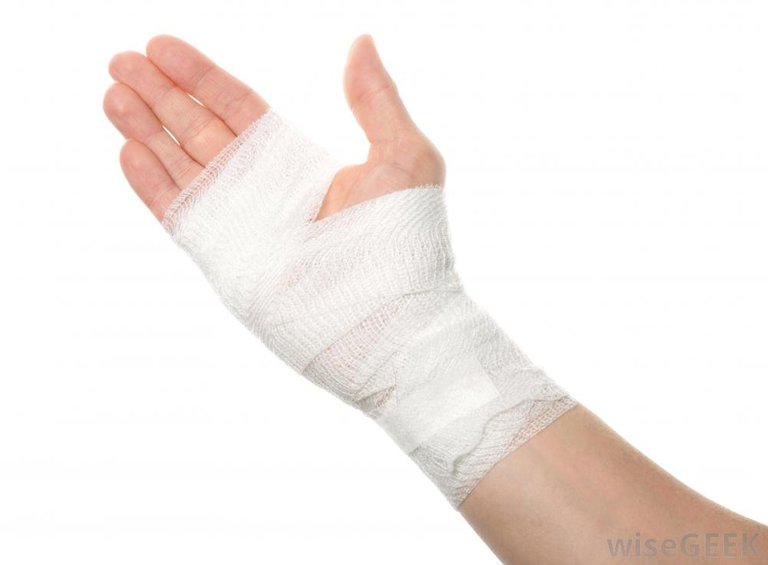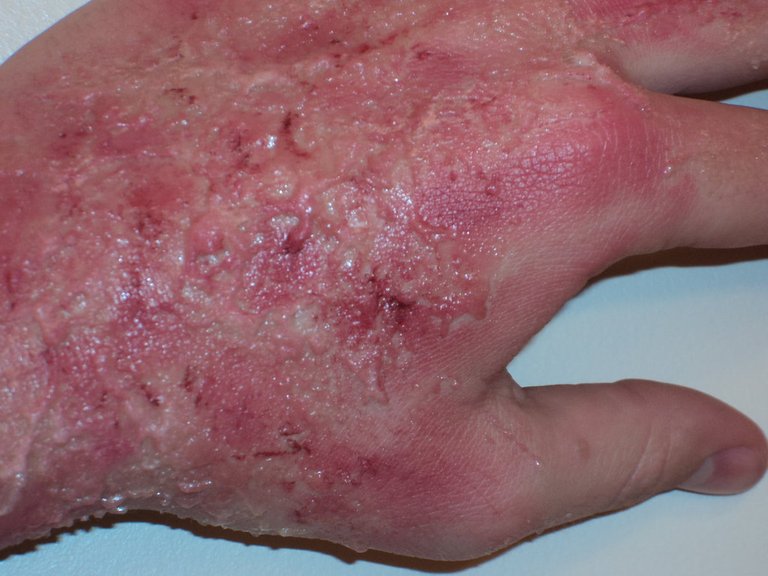A person can suffer skin burns from various causes.
The frequency-common are accidents involving direct contact with liquids or hot objects, chemicals, steam, electricity, heat or prolonged exposure to the sun.
Whether We Like It Or Not, sometimes it's happening to burn yourself a little especially when we prepare some food. We can also help someone next to us with a good advice or action.
Signs and Symptoms of Burn
Signs and symptoms are different, depending on how serious is the burn (as described above). The doctor will evaluate the burning (or affected body skin) to assess the risk of complications such as infection, dehydration and disfigurement.
Infection
People who burn are very prone to infections. It can be difficult to tell if a minor burn is infected because the skin around the burn is usually red and may become warm to the touch - both symptoms are signs of infection. Any change in the appearance of a burn, or how the person feels, should be brought to the attention of a doctor. Possible signs of infection include:
- Changing the color of the skin around the burned area or burn;
- Purple color change, especially where inflammation occurs;
- Change in thickness burn (sunburn suddenly extends deep into the skin);
- Greenish suppuration or pus;
- Fever
- Dehydration
In severe burns or generalized fluid is lost through the skin and the person can become dehydrated. Dehydration can lead to life-threatening shock. A doctor will treat dehydration fluids intravenously (IV). Possible signs of dehydration include:
Thirst;
Dizziness, especially when changing position from sitting or lying down to standing;
Weakness;
Dry skin;
Urinating less than usual.
Treatment depending on the type of burns
Burns Type I - are the easiest type of heartburn that you may suffer a person and involves damage the outer layer of skin, the epidermis. The skin will be reddened, painful and inflamed. If first-degree burn has affected a large area of skin, it can be treated at home.
Second-degree burns - are those where is harmed and the second layer of skin (hypodermis). If there was this kind of burns, skin will be red spots and burning areas will be present vesicles. Second-degree burn causes severe pain and swelling.
If a person will experience a second-degree burn small can treat it at home, but if the portion burned is extensive or involves the hands, feet, the face, groin, buttocks, or a major joint will go doctor or hospital for care professional.
- Third degree burns - involve all layers of skin and possibly structures located beneath the skin. Some areas are often black, charred. Possible pain is severe, but if a nerve has been damaged as a result of the burn, the pain likely to be decreased or not be present. All third degree burns require emergency medical care.

Source
How can minor burns treated at home?
The first step to treating minor burns is to be held as the burned area under cold running water 10-15 minutes. If this is not possible, apply a compress with cold water. Do not put ice directly on the skin affected, since it can cause frostbite and injuries.
Do not apply butter on burns. Butter will capture heat in tissue damage and its effects will worsen the situation and increase the risk of developing infections.
After the area was cooled due to maintenance in cold water, apply a special cream on the burn. The lotion will relieve discomfort and prevent dry skin.
After the burned skin will be moisturized, it will be covered with a sterile gauze bandage. It is important to not wound too tight.
In the burned area will appear liquid-filled vesicles, which are designed to prevent infection and that will heal by itself. If you do not break blisters, skin, wash with soap and water, will dry and then will apply an antibiotic ointment that will wrap over a sterile gauze bandage.
If necessary, use acetaminophen or other painkillers when pain is accentuated.

Source
Treating major burns
For the treatment of major burns, seek medical assistance as soon as possible.
The cause of the accident to be removed, but must not remove burnt clothing that have stuck to the skin.
Until you are receiving emergency medical treatment will cover the burn with a bandage dry, sterile or clean cloth. You can use a sheet of cotton bed for larger areas. Do not use beds or towels because both tend to stick burns.
Do not apply ointments, nor will try to break the blisters.


You are slowly compiling steemit's very own WebMD. :)
haha, one day it will happen or I will show my work here :)
good to know how to react in case of a burn
Are there really people putting butter on burns??? But why?? That sounds so crazy to me...
With 8 billion people around the world.. I'm sure there are some occurrences..
Possibly, but we may cross a threshold in stupidity here!
@lemouth
Threshold crossed! We are doomed!